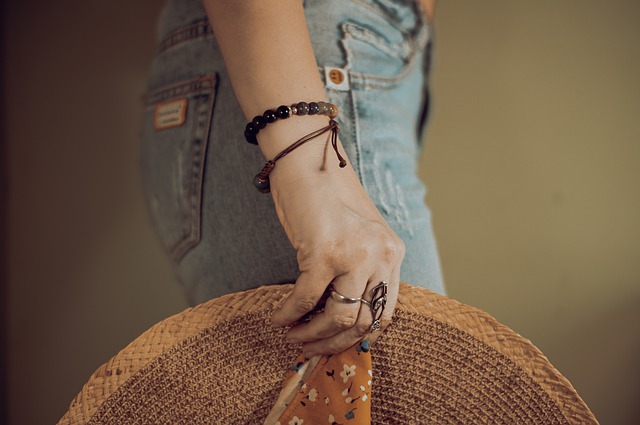
by MakeYourOwnJeans | jeans |
There are different treatment processes available for jeans. When producing jeans, manufacturers may expose them to pumice stones. A treatment process known as stone washing, it promotes softer jeans by intentionally breaking down the denim fibers. Resin treatment is another process available for jeans. What is resin treatment exactly, and how does it affect jeans? The Basics of Resin Treatment Resin treatment involves the application of a synthetic resin to the surface of jeans. It’s designed to create a stiff and shiny denim finish. The resin is typically applied to the denim fabric after the jeans have been cut and sewn into their final shape. Once applied, the jeans are placed in a large commercial oven where they are baked. Exposure to the hot air inside of the oven will allow the resin to cure. How Resin Treatment Affects Jeans When treated with resin, jeans undergo several changes. As previously mentioned, it will make the jeans stiffer. Resin-treated jeans are almost always stiffer than their untreated counterparts. They are still made of denim. Denim is comprised of cotton, which is known for its soft and fluffy properties. But resin treatment will result in a layer of hardened resin over the surface of the jeans. The end result is stiffer jeans. Some people prefer harder, stiffer jeans, so they specifically look for resin-treated jeans. Resin-treated jeans also have a shinier, glossier finish than traditional jeans. After curing, the resin will form a transparent layer over the surface of the jeans. This transparent layer will have a naturally shiny appearance to it. Another way that resin treatment affects jeans involves wrinkles....

by MakeYourOwnJeans | jeans |
When shopping for a new pair of jeans, you might be wondering whether to choose lightweight or denim. Jeans are available in lightweight and heavyweight denim. They are both made of the same warp-faced cotton textile. Lightweight jeans, however, weigh less than their heavyweight counterparts. So, should you choose lightweight jeans or heavyweight jeans? To answer this question, there are a few things you must know about lightweight and heavyweight jeans The Basics of Denim Weight and What It Means Jeans are often labeled with a specific weight. Measured in ounces (oz), it represents the weight of the denim from which they were made. Some jeans are labeled with “5 oz,” for instance, whereas others are labeled with “14 oz.” The weight listed on these labels doesn’t represent the total weight of the jeans. Rather, it represents the weight of the denim. Jeans are made of denim, which is a warp-faced cotton textile. Some jeans are made of thicker, heavier denim than others. Denim weight is per square yard. The listed weight, in other words, is multiplied by the total square yards used to produce the jeans. A typical pair of jeans is made of about one and a half to two square yards of denim. If the listed weight is 7 ounces, the total weight of the jeans will be about 10.5 to 14 ounces. Regardless, jeans are often labeled with a denim weight. The denim weight represents the per-square-yard weight of the denim from which the jeans were made. What Are Lightweight Jeans? Lightweight jeans are characterized by their use of lightweight denim. They are made of...
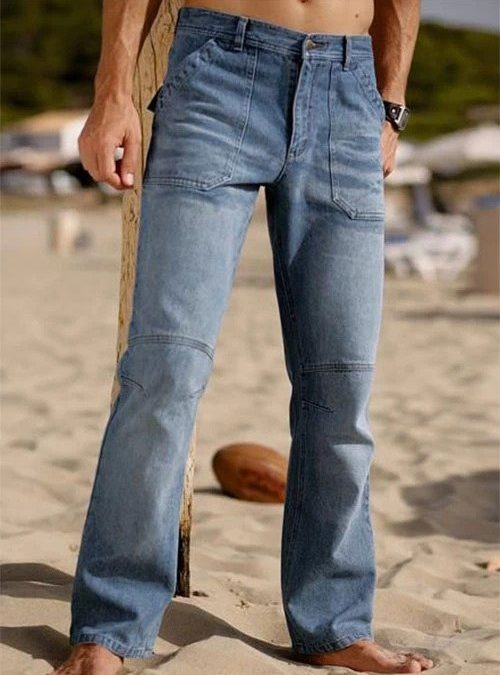
by MakeYourOwnJeans | jeans |
When shopping for jeans, you may come across knee joint jeans. Jeans remain one of the most popular types of trousers. Statistics show that the average person owns about a half-dozen pairs of jeans. While all jeans are made of denim, they are available in different styles, such as knee joint. Below are some frequently asked questions and answers about knee joint jeans. What Are Knee Joint Jeans? Knee joint jeans are denim trousers that feature a built-in joint at the knee. There’s a discreet seam at the knee that functions as a joint. Some knee joint jeans have cargo pockets or other features, but they all have a built-in joint at the knee. This is why they are known as “knee joint jeans.” How Do Knee Joint Jeans Differ From Other Jeans? Only knee joint jeans feature a built-in joint at the knee. Other jeans are made of the same denim material, but they lack this built-in joint. The pant legs of other jeans run from the top to the bottom without a joint. You can identify knee joint jeans by inspecting the knee. If there’s a seam-based joint at the knee, they are knee joint jeans. If there’s not a seam-based joint at the knee, they are traditional jeans. Where Can I Purchase Knee Joint Jeans? You can order knee joint jeans here at MakeYourOwnJeans. We offer jeans in a variety of styles. Maybe you’re looking for carpenter jeans, or perhaps you’re looking for stretch jeans. You can even find knee joint jeans available for sale here at MakeYourOwnJeans. Rather than driving from store to store in...
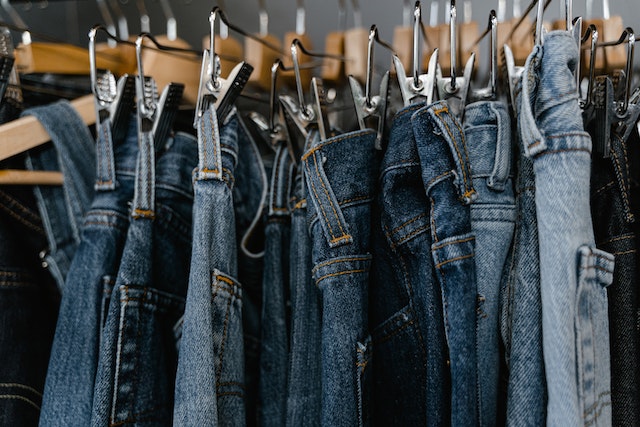
by MakeYourOwnJeans | jeans |
With 2023 upon here, there’s no better time than now to update your wardrobe with some of the most popular styles of women’s jeans. Fashion trends come and go. Styles that were popular last year may no longer be popular this year. There are dozens of styles of women’s jeans. Below are seven of the most popular styles of women’s jeans for 2023. By including them in your wardrobe, you can project a fashion-forward appearance while standing out from the crowd in the process. #1) Flared Flared jeans have become increasingly popular. They are characterized by a tapered bottom, resulting in a bell-bottom-like shape. Flared jeans aren’t particularly new. They’ve been around since the 1970s, during which they were commonly associated with the counterculture movement. Flared jeans eventually faded from popularity, but more and more women are beginning to wear them again. You can identify flared jeans by inspecting the width of the legs. Flared jeans don’t have a uniform leg opening. Rather, the bottom part of the leg is wider than the top part of the leg. This created a tapered, flared bottom. Flared jeans become wider toward the bottom. #2) High Rise High-rise jeans are making a comeback. Like all jeans, they are denim trousers. High-rise jeans simply have a higher rise than other styles of jeans. The rise is the distance from the top of the waistband to the bottom of the crotch. High-rise jeans have a longer distance between these two points. This allows them to sit higher on the waist when worn. Why should you choose high-rise jeans? They offer several benefits, one of...
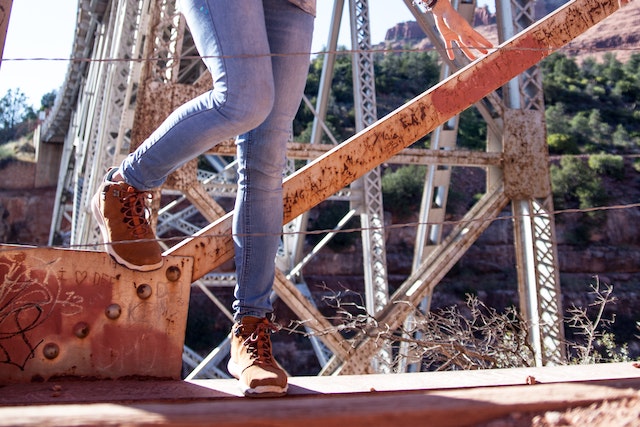
by MakeYourOwnJeans | jeans |
Are your jeans constantly wrinkled? Denim is a soft, durable material consisting of cotton. Even with these attractive properties, though, it’s not immune to wrinkles. Whether your jeans are made of plain denim or stretch denim, they may wrinkle. Below are some of the top causes of wrinkled jeans. #1) Overloading the Washing Machine You can wash your jeans in the washing machine, but try not to overload it. Overloading the washing machine with too many garments may lead to wrinkles. If you wash your jeans with a dozen other garments, for instance, they may develop wrinkles. There won’t be enough space for your jeans to move around while being washed, in which case they’ll bunch up and wrinkle. A simple solution is to wash your jeans in smaller loads. #2) The Wrong Size Choosing jeans in the wrong size may lead to wrinkles. Jeans are trousers, and like most other trousers, they are available in different sizes. You can typically find them in different waist and length sizes. If you accidentally choose jeans that are too big for your body, you may struggle to protect them from wrinkles. Jeans that are too big are prone to wrinkles. Even if they are just one or two sizes too big for your body, they may succumb to wrinkles. You’ll need to choose jeans in the right size for your body to prevent this from happening. Make sure the waist and length of the jeans match your own body’s measurements. #3) Exposure to Heat Prolonged exposure to heat may cause your jeans to wrinkle. Denim and other textiles have molecular bonds....
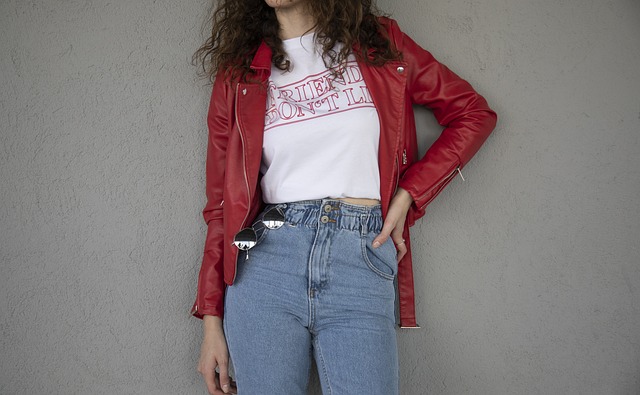
by MakeYourOwnJeans | jeans |
Looking to cuff your jeans? We have you covered. Whether they are made of plain denim or stretch denim, you can cuff your jeans in just a few easy steps. It will create a cleaner appearance while ensuring that your jeans don’t drag on the ground. The Basics of Cuffing and What It Means Cuffing is the process of rolling up the bottom or hem of the pant legs. The origins of this fashion trend can be traced back to the 1950s. During this period, men and women alike regularly cuffed their jeans. It allowed them to stand out by projecting a more unique style. While many fashion trends have come and gone since the 1950s, cuffing is still around. You can cuff your jeans by rolling up the bottom a few inches. Cuffing isn’t exclusive to jeans. Other types of pants and trousers can be cuffed as well. Regardless, the term “cuffing” refers to the process of rolling up the bottom or hem of the pant legs. A proper cuff should remain in place. In other words, the bottom of the pant legs shouldn’t become unrolled. You can wear cuffed jeans or other types of cuffed pants all day long. Reasons to Cuff Your Jeans There are several reasons to consider cuffing your jeans. It can help you achieve a more balanced proportion. Cuffing will essentially create a balanced proportion between the length of your jeans and the height of your body When cuffed, your jeans won’t drag on the ground. It’s not uncommon for oversized jeans to drag on the ground. If they are just one size...

















